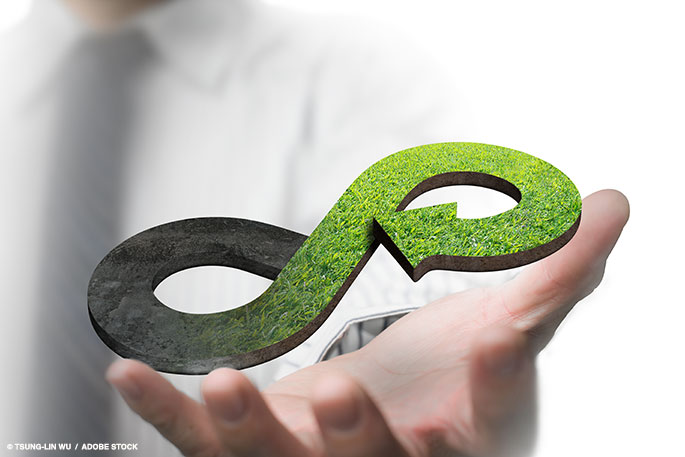Sustainability has been working backward, from developing recycling and reuse innovations for made products to substituting healthier materials in current designs, and now to the new standard, designing for sustainability. What does this actually mean? Products are designed, from the idea forward, with sustainability and safety in mind. The Cradle to Cradle certification program is the gold standard for this design-forward mindset, which they call the New Industrial Revolution.
Part of the mindset change is the difference in our thinking about the relationship of humans to the earth’s natural resources. Do we own the earth, and everything it holds, or are we stewards of natural resources for the next generation? The new paradigm has the changed thinking of humans as stewards of the earth’s natural resources, as if the earth and everything it holds, and its potentials, were being held in a giant trust fund, and we are the trustees. We can use the resources, as long as we don’t allow the principle to be depleted.
The Cradle to Cradle certification measures consumer products with five parameters: material health, material re-utilization, renewable energy use, water stewardship, and social fairness. Rather than trying to force an already developed product to fit into acceptable use in these categories by changing the areas that do not comply, products being made are designed from scratch to be sustainable.
Material health looks at products as biological and technical nutrients that can combine in a number of ways to make different compounds and then products. At all stages of the life of a material, it must be safe for the environment and human and animal health. In other words, it cannot degrade into radioactive tailings or off-gas anything that is poisonous to breathe when it is old. We cannot assume that storage technology will improve in the future and save us.
Instead of an end product after use that needs a final solution, such as a landfill or hazmat storage, products are made of materials that can be broken down and reused as raw materials or compounds. The recycling industry will take the lead in developing systems and technologies that will allow products to be used, and then broken down, made into new products, used again, broken down, into infinity. This is the dream of the circular economy, a system of sustainability that is coming to fruition.
Why cradle to cradle? The usual term, cradle to grave, implies that the world ends with us. Cradle to cradle reminds all that a new generation is born after us, and our decisions and behaviors affect them.





































































































































 Three Ways to Engage Teams and Clients to Maximize Your Recycling Program Engagement
Three Ways to Engage Teams and Clients to Maximize Your Recycling Program Engagement  How to Integrate Accessibility Into Your Sustainability Planning
How to Integrate Accessibility Into Your Sustainability Planning  Why Park Benches Can Promote Workplace Well-Being
Why Park Benches Can Promote Workplace Well-Being 
